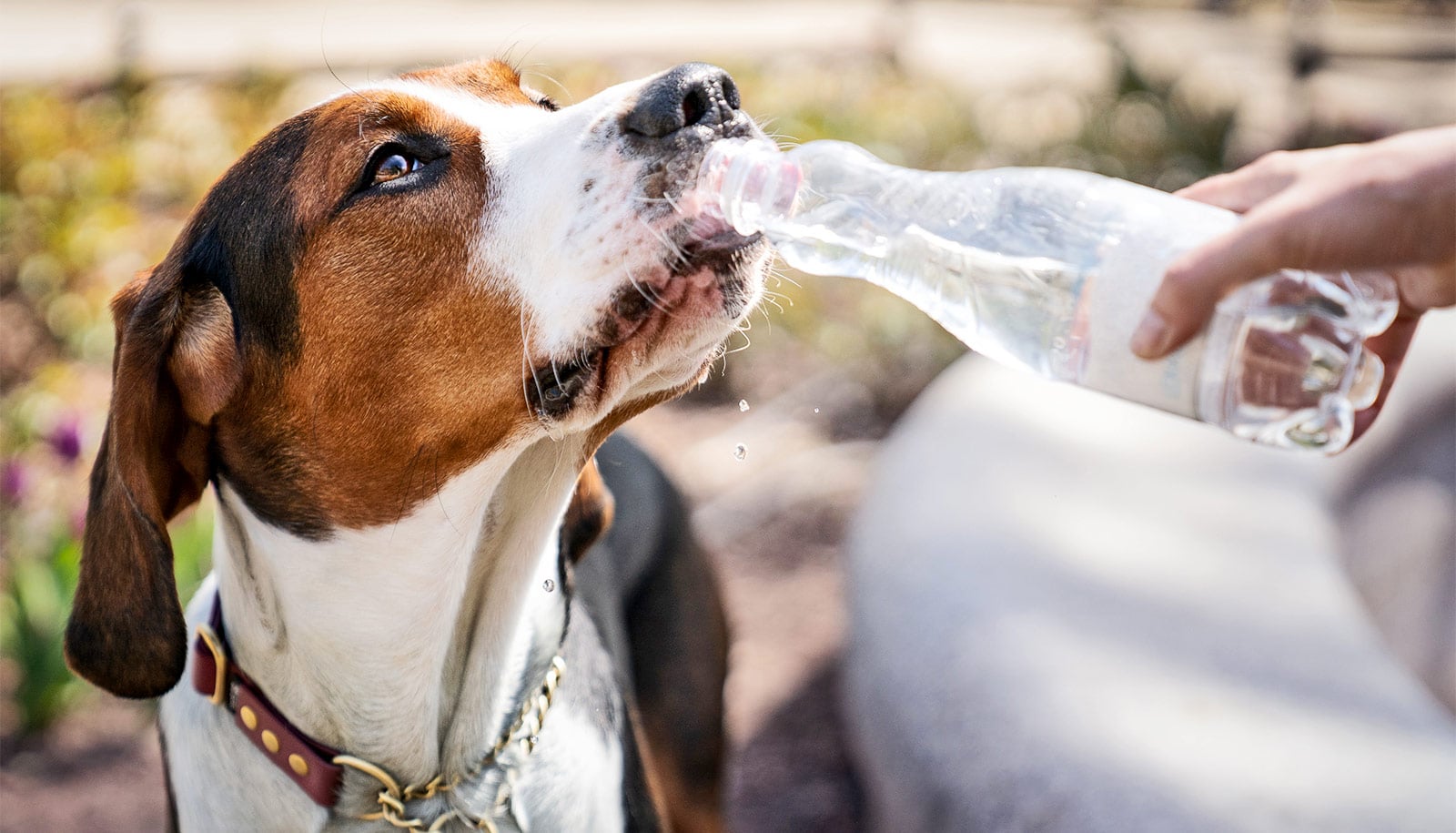
"The fact that some of the concentrations in dogs are similar to those in children reinforces the fact that dogs are important in-home sentinels for these contaminants," says Scott Belcher. "And the fact that PFAS is still present in animals that don't drink well water points to other sources of contamination within homes, such as household dust or food." (Credit: Getty Images )
PFAS found in pet horses and dogs in North Carolina
Researchers have detected elevated PFAS levels in the blood of pet dogs and horses, even in dogs that only drank bottled water.
Researchers have detected elevated PFAS levels in the blood of pet dogs and horses from Gray’s Creek, North Carolina, including dogs that only drank bottled water.
The work establishes horses as an important sentinel species and is a step toward investigating connections between PFAS exposure and liver and kidney function in dogs and horses.
The study, which included 31 dogs and 32 horses from Gray’s Creek, North Carolina, was conducted at the behest of community members concerned about their pets’ well-being. All of the households in the study used well water , and all of the wells had been tested and deemed PFAS contaminated by state inspectors.
The animals received a general veterinary health check and had their blood serum screened for 33 different PFAS chemicals, chosen based on compounds present in the Cape Fear River basin and the availability of analytical standards.
From the targeted list of 33 PFAS of interest, researchers found 20 different PFAS in the animals. All of the animals in the study had at least one chemical detected in their blood serum, and over 50% of the dogs and horses had at least 12 of the 20 detected PFAS.
PFOS , a long-chain PFAS used for years in industrial and commercial products, had the highest concentrations in dog serum. The perfluorosulfonic acid PFHxS, a surfactant used in consumer products and firefighting foams, was detected in dogs, but not horses.
Consistent with wells being the known contamination source, some ether-containing PFAS including HFPO-DA (colloquially known as GenX), were detected only in dogs and horses that drank well water.
In dogs who drank well water, median concentrations of two of the PFAS—PFOS and PFHxS—were similar to those of children in the Wilmington GenX exposure study, suggesting that pet dogs may serve as an important indicator of household PFAS.
Dogs who drank bottled water, on the other hand, had different types of PFAS in their blood serum. However, 16 out of the 20 PFAS detected in this study were found in the dogs who drank bottled water.
Overall, horses had lower concentrations of PFAS than dogs, though the horses did show higher concentrations of Nafion byproduct 2 (NBP2), a byproduct of fluorochemical manufacturing. The finding suggests that contamination of the outdoor environment, potentially from deposition of the PFAS onto forage, contributed to their exposure.
“Horses have not previously been used to monitor PFAS exposure,” says Kylie Rock, a postdoctoral researcher at North Carolina State University and first author of the study, published in Environmental Science and Technology . “But they may provide critical information about routes of exposure from the outdoor environment when they reside in close proximity to known contamination sources.”
Finally, the veterinary blood chemistry panels for the animals showed changes in diagnostic biomarkers used to assess liver and kidney dysfunction, two organ systems that are primary targets of PFAS toxicity in humans.
“While the exposures that we found were generally low, we did see differences in concentration and composition for animals that live indoors versus outside,” says corresponding author Scott Belcher, associate professor of biology.
“The fact that some of the concentrations in dogs are similar to those in children reinforces the fact that dogs are important in-home sentinels for these contaminants,” Belcher says. “And the fact that PFAS is still present in animals that don’t drink well water points to other sources of contamination within homes, such as household dust or food.”
The National Institute of Environmental Health Sciences and the North Carolina Policy Collaboratory funded the work.
Source: NC State
The post PFAS found in pet horses and dogs in North Carolina appeared first on Futurity .
Share this article:
This article uses material from the Futurity article, and is licenced under a CC BY-SA 4.0 International License. Images, videos and audio are available under their respective licenses.
Related Articles:
At least 1 in 5 shelter dogs has Lyme disease or heartworms
Aug. 22, 2023 • futurityIron compound makes water safer to drink
Nov. 3, 2020 • futurityLinks/images:
- https://www.futurity.org/well-water-birth-defects-1146552/
- https://www.futurity.org/pfos-pfoa-forever-chemicals-2272732-2/
- https://doi.org/10.1021/acs.est.3c01146
- https://www.futurity.org/gut-microbiome-chemical-exposure-svocs-2482002-2/
- https://news.ncsu.edu/2023/06/pfas-found-in-blood-of-dogs-horses-living-near-fayetteville-n-c/
- https://www.futurity.org/pet-horses-dogs-pfas-pollution-2935542-2/
- https://www.futurity.org


